How to be a better Dom: track her cycle
Demystify your partner's period and unlock a new level of devotion
When Andrew asked if we could schedule our interview to align with the “highest energy days” of Dawn’s cycle, I was intrigued. It was the first time I’d heard a man discuss a woman’s menstrual cycle so openly—let alone plan around it.
Andrew is a Dom and Dawn is his sub. You may know them from Infinite Devotion.
In their kinky world, tracking Dawn’s monthly rhythms isn’t just courteous; it’s strategic. (You’ll read more about that strategy later).
I haven’t always been attentive to my own cycle, and I’ve paid the price: booking back-to-back social engagements during one phase, only to have the commitment pop up weeks later and feel, energetically, like a cardboard box on the sidewalk in the rain.
Often, I’m cursing Ovulation Nicolle for putting Day-One Period Nicolle in a business meeting when she should be resting.
My own misplaced melancholy would be a mystery until I saw blood in my underwear.
Or, with cutthroat decision-making abilities and a lion’s libido, I’d exclaim, ‘is this what it feels like to be a man?!’ as I spun the earth on my energetic erection…only for the magic juice to run out 10 days later and cast me a hundred feet down from my golden perch of seemingly infinite potential.
If I didn’t know any better, I’d assume I was going mad. But no, I’m a woman.
At a recent dinner with three men, I mentioned something about making a somewhat snarky-sounding comment to my partner that felt out of place:
"I realized later that I was —”
“—in your Luteal Phase,” one of the men at the table filled in. “So fun; the bratty phase.”
Is that so?
I thought back to my partner’s playful response to my snark. He was looking at me from a chair across the room in the early morning light when I said, from bed, ‘what are YOU looking at?’
What I really wanted was:
(1) not to be awake, and
(2) for him to be back in bed cuddling with me.
But the ‘YOU’ landed with an unintentional ‘the fuck you lookin’ at?’ edge that didn’t convey my need for closeness.
When I think of being bratty, I think of being lovingly but firmly “put in my place,” which, put another way, feels like being reminded that I am safe to express myself, but his steadiness in the face of those expressions isn’t grounds for disrespect.
Well, real disrespect.
The undertone of bratty behaviour, for me, is playful aggression where “disrespect” can be playfully tested.
This might look like me pushing him onto the bed from behind while he’s folding laundry, wrestling for control, making some sort of mess of the previously folded clothes, obeying a command to get on the floor, being put on a leash or having a polished boot pressed into my chest, smooshing me into the hardwood while I huff-and-puff for release—but not reeeeally wanting it.
In the case of my morning snark, he came over to the bed and, in a teasing way, said, “what was that tone?”
He kissed me all over my face.
We laughed.
Then made love as the sun rose.
What are YOU looking at? he joked a few days later, before pulling me across his knee for a spanking.
In an alternate universe, maybe he mistook my comment for PMS. He brushed it off as a “bitchy woman thing” and let it sink to the bottom of our day where it would form the first layer of Resentment Mountain. He’d resign to spending more time in the garage working on everything but himself, muttering solemnly about mood swings. Fifteen years later, over dinner, once Resentment Mountain had become volcanic, he'd explode and say "What are YOU looking at?"— before leaving me for his secretary and taking all the expensive glassware.
Or, perhaps, on another timeline where he wasn’t aware that I move in cycles, he barked back: What the fuck is your problem? I’d recoil, feel misunderstood, and turn inward, where my inner world would slowly become a wintery cave. Huddled around a fire of simmering rage at my inability to express myself, I’d begin to plot his downfall. Fifteen years later, over dinner, chilled to the bone and spoken with a voice like glass shattering, I’d say "What are YOU looking at?” — before leaving him for his secretary and taking all the expensive glassware.
Luckily, we’re on the timeline where he kissed my face and made a joke of it, saving us the anguish of a lengthly divorce down the road.
Yes, it was my Luteal Phase, as the friend at the table had noted, but I was in the need of tenderness and grace as I navigated fluctuating emotions.
I began to wonder how demystifying a woman’s cycle might save relationships.
How might menstrual cycle knowledge help men, and specifically those in a Dominant-submissive dynamic, become even better at creating and nurturing an environment based on the reality of a woman’s internal world?
My curiosity about how a Dom could create scenes based on his submissive partner(s) cycle led to me:
Reaching back out to Andrew with follow up questions:
(1) how has tracking Dawn’s cycle made him a better Dom, and
(2) when he talks to other men about the value of tracking a woman’s cycle, what is he saying?
Chatting with Elena Lakay, Matchmaker, Clinical Sexologist & Reproductive Health Specialist, about the influx of men she’s seen in her program the last couple of years who are taking an interest in their partner’s cycles.
She tells me that the most consistent response she gets from men is that ‘if they only knew then what they know now,’ they might not have lost their wife. (You’ll find more insights from her below).And getting a response on IG from hormone nutritionist, Miranda Popen, who gave me a general overview of the cycles and corresponding behaviours outside of a kink context:
Through these resources and my own knowledge of kink, I paired “submissive expressions” to different phases of a woman’s cycle.
Of course, everyone is different, therefore, these won’t be perfectly applicable to everyone. Please take the liberty of discovering how this information might inform your unique D/s dynamic or relationship to women, in general.
How a Dom can deepen the dynamic by tracking their sub’s cycle
Hormonal changes throughout a woman’s cycle impact energy levels, libido, mood, and sensitivity. By aligning scenes and kinky activities to her cycle, a Dom can create a more fulfilling connection during each phase.
Menstrual Phase (Days 1-5ish)
What’s Happening:
The menstrual cycle begins with her period, as her body sheds the uterine lining due to no pregnancy. Hormones like estrogen and progesterone are at their lowest. This often leaves her feeling tired, crampy, bloated, emotional, and introspective. Energy is typically low, and libido may decrease, although some may crave intimacy for comfort.
Submissive Behaviours: The Little — Nurturing and care-focused
She may crave deeper emotional connection and reassurance.
Gentle dominance, aftercare, and nurturing scenes are ideal.
Pain tolerance and stamina may be reduced, making intense play less appealing.
How to Support Her:
Avoid intense activities and offer cozy nights in instead.
Ask if she needs space or company, and respect her answers.
Provide heating pads, favourite snacks, or make her tea.
If she’s quiet or irritable, it’s not about you.
Dom Tips:
Lean into softer dynamics like Daddy/Mommy Dom and little girl (DDLG/MDLG) styles.
Build scenes around care: warm baths, cozy aftercare, or non-sexual acts of service.
Check her boundaries more frequently.
Scene Suggestion:
Light bondage with soft fabrics.
Follicular Phase (Days 6-14ish)
What’s Happening:
After menstruation, her body begins preparing for ovulation. Estrogen and testosterone levels rise, leading to increased energy, optimism, and sociability. She’s likely feeling motivated and more open to new experiences. Libido also rises.
Submissive Behaviours: The Brat — Playful and adventurous.
She may be eager to try new things or engage in high-energy scenes.
Feeling more confident in her body and submission.
Communication and emotional resilience improve.
How to Support Her:
Take her on fun dates, try new activities, or engage in physical challenges together. Go hiking, dancing, or to the gym as partners.
Dom Tips:
Use this phase to explore experimental play or roleplay scenarios.
Scene Suggestion:
Rope suspension, roleplay, playful teasing, or trying new toys.
Ovulatory Phase (Days 14-16ish)
What’s Happening:
Ovulation occurs as her body is biologically primed for reproduction. Estrogen and testosterone peak, boosting libido, confidence, and boldness. She may feel sexy, magnetic, and deeply connected to her body.
One of the most striking revelations from Elena Lakay is the potential that ovulation holds for women:
“At this time, women have access to both hemispheres of their brain, making them highly creative, solution-oriented, and capable of handling complex tasks. During ovulation, she is limitless—a biological and psychological superpower.”
Submissive Behaviours: The Masochist — Passionate and intense
She may crave deeper erotic power exchange.
Openness to exploring edgier kinks or intense scenes.
Physical and emotional intimacy feels more profound.
How to Support Her:
Be fully present for her heightened desire.
Acknowledge her confidence and sensuality.
Dom Tips:
Create longer, immersive scenes with an emphasis on more intense sensations.
Interested in being pegged? Encourage her to try a strap-on.
Animalistic play is a fun way to entice a different side of her to come out. No talking, just growling and purring?
Let her take the lead in, or outside, of the bedroom (hello, threesome, is that you?)
Scene Suggestions:
Orgasm control/denial, consensual non-consent (CNC) play, anal play, pegging, or extended impact play.
The Transition: “Like Flipping a Switch”
Although ovulation might seem like a hormonal peak, Lakay emphasizes that the very next day can bring a drastic change:
“The day after ovulation is like flipping a switch—nothing is the same as it was.”
Why the quick turn-around?
“After ovulation, estrogen and testosterone dip, so the energy and drive that were plentiful just a day before start to wane. Meanwhile, progesterone steps in as the new dominant hormone. Alongside progesterone’s rise, levels of GABA, a calming neurotransmitter, increase, encouraging rest and recovery.”
Luteal Phase (Days 17-28ish)
What’s Happening:
Her body prepares for menstruation, and hormone levels like progesterone rise and fall, while estrogen dips. PMS symptoms such as mood swings, irritability, fatigue, bloating, and cravings for sweet or salty foods may appear. Libido can vary widely during this phase. (I can see why some might equate PMS to bratty behaviour).
Submissive Behaviours: The Pet — Grounding and low-pressure.
She may have heightened emotional reactions.
Craving surrender to release emotional tension.
Fatigue may limit her ability for long or intense scenes.
How to Support Her:
Be calm and kind, even if she seems reactive. Hold space; stay steady.
Handle small tasks or chores to reduce her stress.
Provide cozy blankets, snacks, and low-pressure activities.
Dom Tips:
Create a safe emotional space for her to release tension through cathartic play.
Avoid overly complex or demanding activities unless pre-negotiated.
“Good girl” (if she’s into that) will likely go a long way here.
Scene Suggestion:
Rhythmic impact play, breath play, or affectionate pet play that involves simple commands and rewards like cuddles and treats.
Recap
Menstrual Phase: The Little — Nurturing and care-focused.
Follicular Phase: The Brat — Playful and adventurous.
Ovulatory Phase: The Masochist — Passionate and intense.
Luteal Phase: The Pet — Soothing, grounding, and low-pressure.
For couples practicing D/s
Lakay highlights how vital it is for the Dominant to help the submissive honour these hormonal realities:
“Testing what she can vocalize that is a true identification with self. Encouraging her to rest, recover, and process emotions during the luteal phase reinforces her well-being and deepens trust in the dynamic.”
Activating the Prefrontal Cortex: Thoughtful Questions
One simple yet powerful method Lakay suggests for supporting her emotional state, especially during more sensitive phases, is asking thoughtful, open-ended questions:
“This process activates the prefrontal cortex, shifting the brain away from the amygdala’s survival mode and into a place of hope and possibility. It encourages her to feel safe and supported, allowing deeper connection and trust.”
More takeaways for Doms: My conversation with Andrew
One of the most profound shifts in any D/s relationship can happen when both partners recognize the powerful interplay between hormones, emotions, and submission.
Andrew, who has been tracking Dawn’s cycle every single day for almost five years, describes how this awareness has transformed not only his role as a Dominant, but also his empathy and compassion toward women in general:
“I think that tracking Dawn's cycle has made me not only a better Dom, but just more understanding of her as a man in general, and also more compassionate towards women in general. It comes back to a statement that I believe wholeheartedly, and I probably say about 5 times a day...we can’t be responsible when we are unaware.”
1. From a 24-Hour Cycle to a 29-Day Cycle
For Andrew, one of the biggest revelations was coming to terms with the fundamental difference between his own daily rhythm and Dawn’s roughly 29-day hormonal cycle:
“What I've really noticed is that when I accept that I go through a 24-hour cycle hormonally, and she goes through a roughly 29 day cycle hormonally, that a lot of the tension, frustration, and confusion I used to have around why she was so damn different all the time has melted away.”
In a D/s context, it’s easy to want consistency. However, men and women often experience very different physiological patterns. By recognizing that each phase of Dawn’s cycle brings unique emotional and physical changes, Andrew learned to lead her with greater understanding and patience.
2. Working with Reality, Not Against It
As a Dominant, one might be tempted to “even out” a submissive’s mood or demand constant emotional availability. Yet Andrew reminds us:
“If I'm expecting her to be the same every day, or I'm trying to ‘level her out,’ I’m working against reality. So I work with the truth, rather than against it.”
This acceptance is at the core of compassionate leadership in a D/s relationship. Trying to force a submissive to ignore or suppress hormonal fluctuations can create unnecessary tension and resistance. Instead, acknowledging and working with her cycle helps build trust, safety, and connection.
3. Mapping Her Cycle to the Rhythm of a Day
A powerful analogy Andrew uses is comparing Dawn’s monthly cycle to a single 24-hour day:
“Her period is like sleep. Her follicular phase is like waking up in the morning. Ovulation is like the wide awake middle of the day. Luteal is like the sleepy, tired time in the evening. Then she goes to sleep again.”
How does this translate to submissive expressions?
Period (Sleep): This is often a lower-energy time, where rest and inward focus might be needed. A submissive may desire softer, more nurturing forms of Dominance, possibly craving comfort and gentle reassurance.
Follicular Phase (Morning): As her energy rises, she may become more playful and open to exploring new experiences. This can be a great time for training, learning new protocols, and setting goals.
Ovulation (Mid-Day): Peak energy, confidence, and sensuality often define this phase. Here, a submissive may revel in more intense scenes or higher-level tasks.
Luteal Phase (Evening): This is when mood shifts can be more pronounced—Andrew mentions how it can be perceived as “bratty.” But in reality, it often reflects tiredness or emotional heaviness. Patience and tenderness can lead to deeper intimacy and a sense of being truly seen.
4. Patience and the Power of Slow Progress
Another crucial realization Andrew shares is recognizing that what might take him a day to move through could take Dawn an entire month:
“A lot of times, what I can work through in a day takes her a whole month. And her slowness challenges my neediness. When I’m able to be patient, understanding, and aligned with the truth of how she operates, I can help lead her to a better life for REAL.”
This perspective resonates strongly in a D/s dynamic. Leadership doesn’t mean pushing a submissive to match the Dominant’s pace. True leadership often involves honouring the submissive’s process, respecting her timeline, and providing the space she needs to come into her own.
5. The Reward of Honouring Her Cycle
At the heart of Andrew’s insights is the call for Dominant partner’s (and all men) to embrace the reality of their partner’s hormonal fluctuations:
“What I continue to challenge men to do is to take responsibility for understanding the truth of her hormonal reality. If we can mirror some approval to women, they generally find it easier to accept themselves in this emotional reality that can feel chaotic and confusing.”
When a Dominant models acceptance—rather than frustration or disapproval—a submissive can feel safer exploring her own emotional states. Instead of feeling shame or pressure to hide what’s happening internally, she can express herself more authentically.
Andrew’s journey underscores this powerful benefit:
“I can't say that I love her if I'm trying to use the authority she’s granted me in her life to force her to abandon her authentic feelings. … When I meet her there, and she meets herself there too, we can actually be in connection rather than in tension.”
Final Thoughts
As Andrew’s experience as a Dom and Elena’s expertise as a Clinical Sexologist and Reproductive Health Specialist shows, acknowledging the realities of a woman’s cycle can transform a man’s perspective from one of frustration to one of compassion and powerful leadership.
When men recognize and embrace the cyclical nature of a woman’s world—and validate her in every phase—they create a dynamic that’s deeply nurturing, profoundly connected, and grounded in the beautiful reality of who she is.
This acceptance builds trust, and trust reinforces devotion. From there, you can world-build together.
Elena Lakay shares testimonies from men who took an interest in their partner’s cycle:
If I had only understood this, I would still be married.
Now I understand why consent changes.
We were not dealing with infertility, we just were out of sync with her cycles.
Now I know how to plan vacations.
I’m never surprised by bleeding.
I know exactly what phase she is in by the changes in the depth of her vaginal canal.
I know how to leverage her fertile window for intense pleasure.
I know to spend more time on the arousal phase when she is luteal.
I look forward to fucking her harder in her follicular phase because she wants more pressure and intensity.
She is more irritable in her late luteal, this is when I offer more support and comfort.
When she is in her fertile window she wants more freedom, she is unafraid to try new things with me around sex.






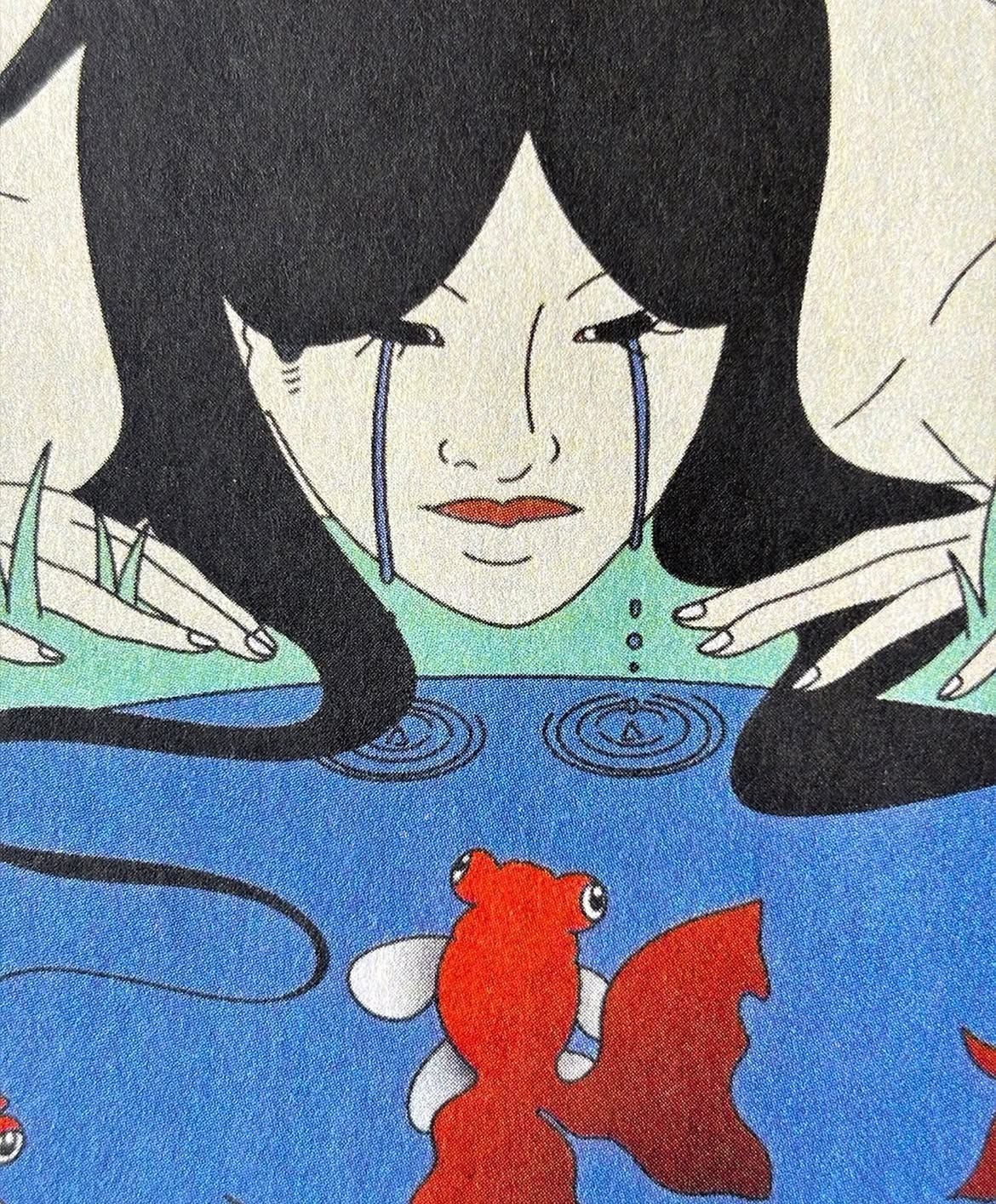


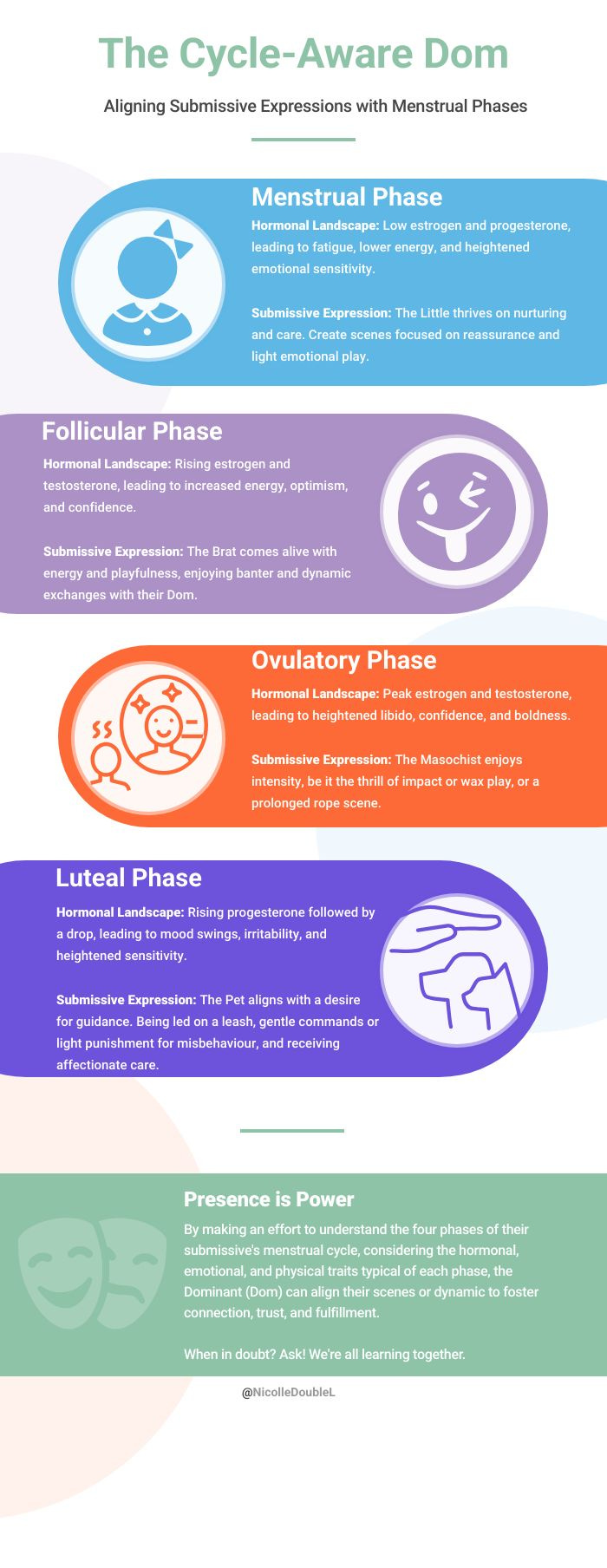
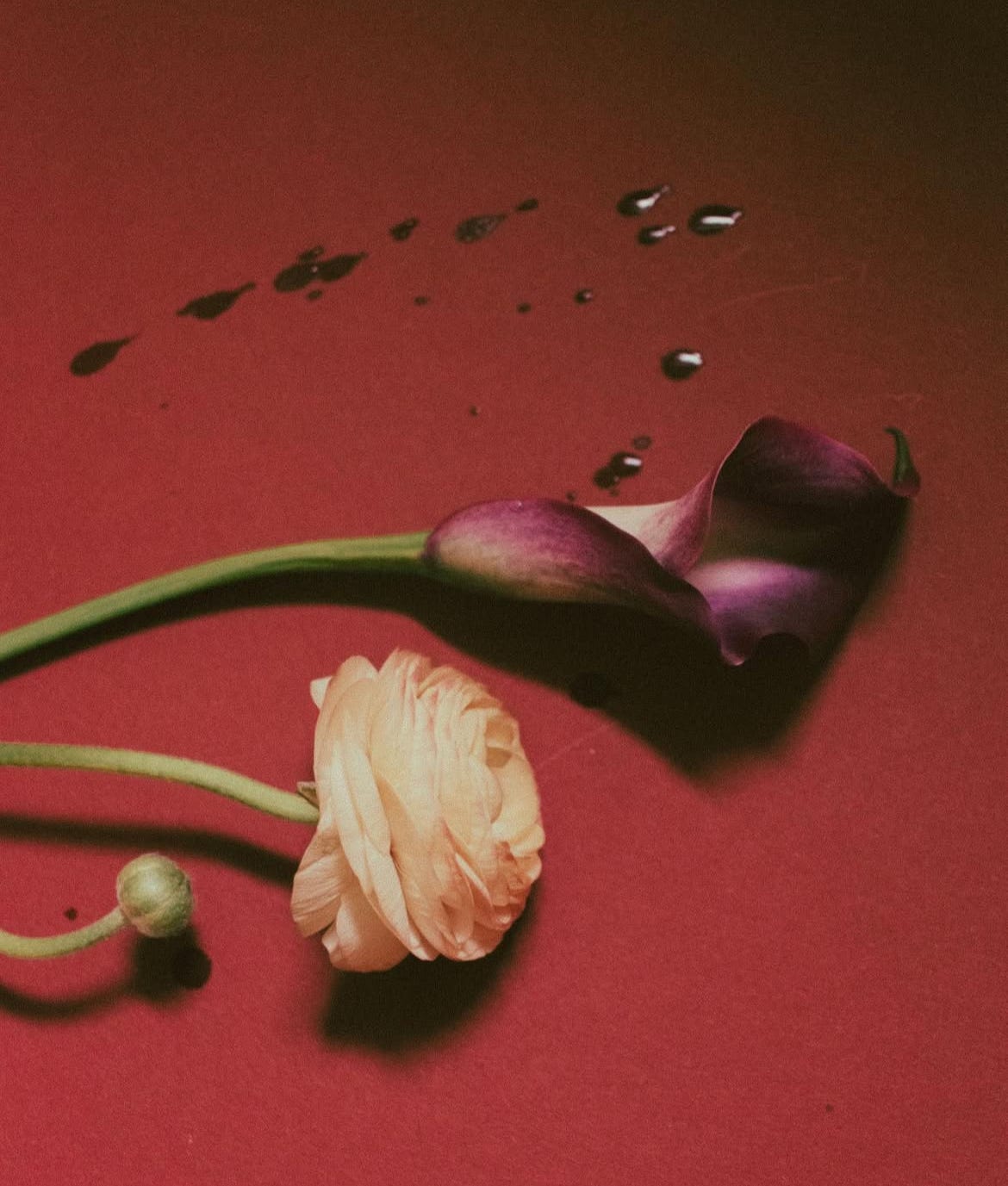
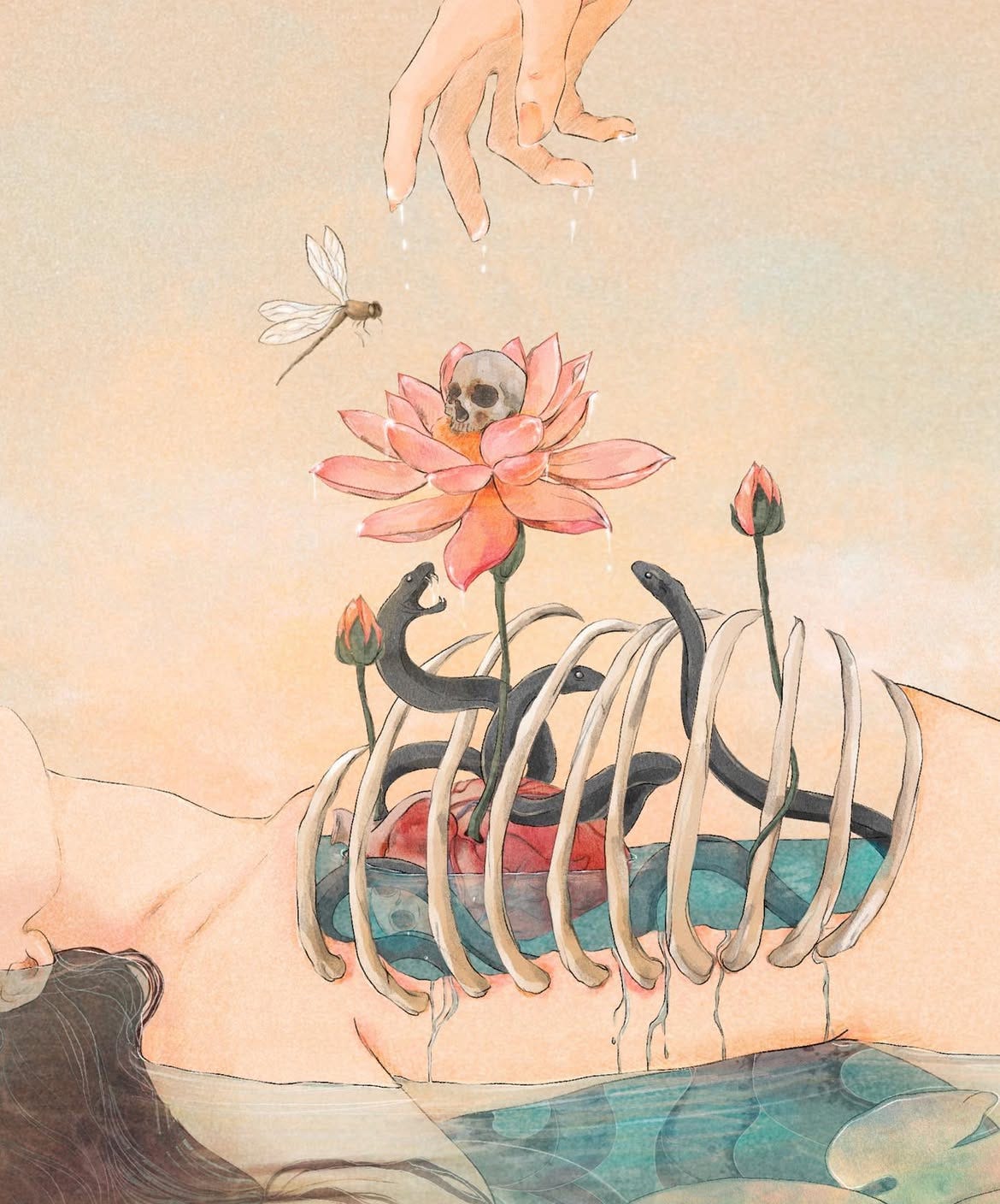






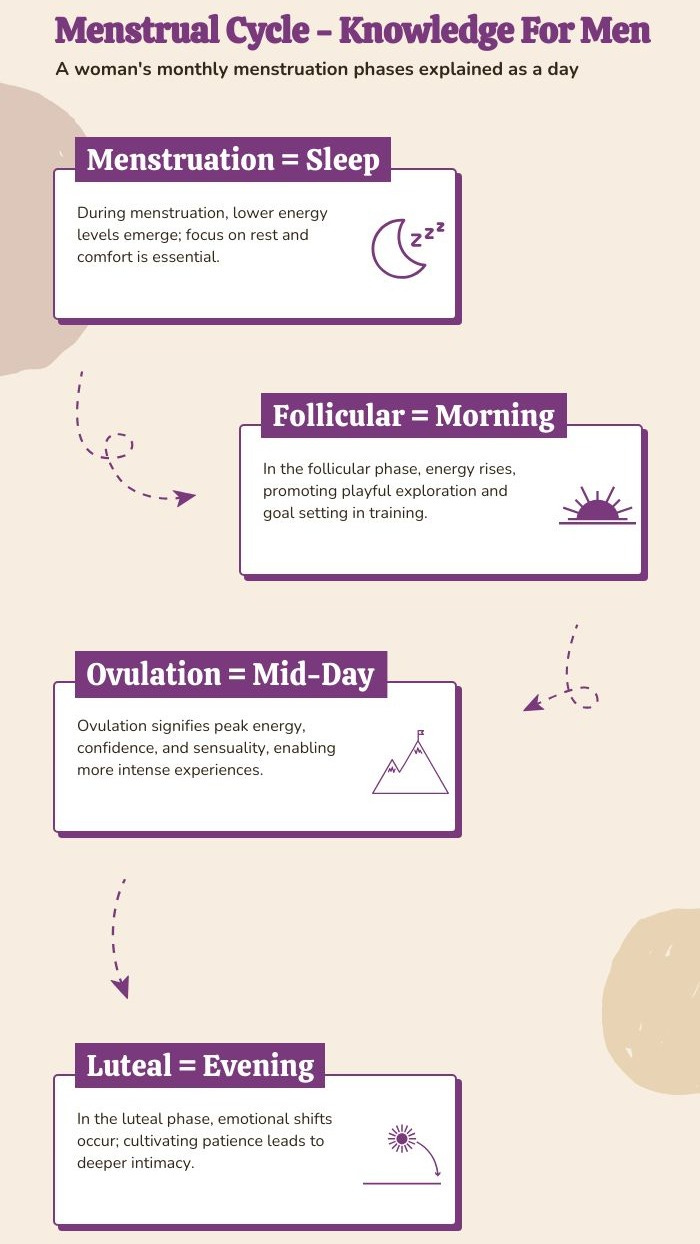
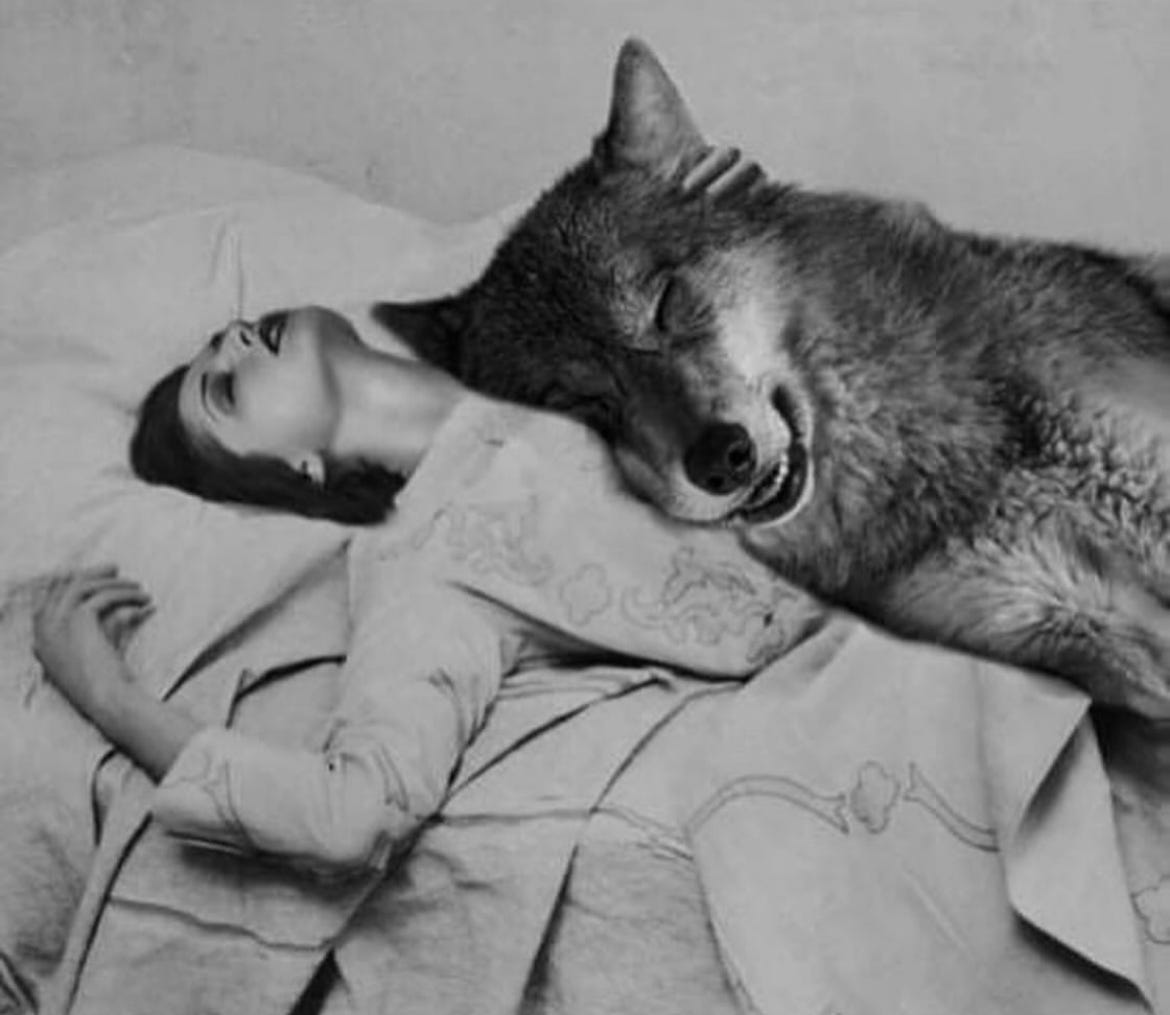
Mind blown. Seriously. Thank you for helping me understand myself better and for helping men understand women better. Every man, every woman, should know this. Even just the understanding of how to work with a woman's cycle.
If your partner is comfortable enough to share her cycle with you, I would say you’re on track with relationship goals.